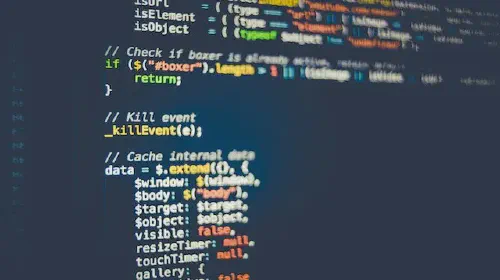Polygon vs. Cardano: A Comprehensive Comparison
Salomon Kisters
Mar 14, 2023This post may contain affiliate links. If you use these links to buy something we may earn a commission. Thanks!
The 21st century has seen the emergence of numerous technological advancements, but few have had as much impact as blockchain.
What started as a decentralized platform for peer-to-peer transactions has evolved into a vast ecosystem that has disrupted multiple industries.
Today, myriad blockchain projects exist, each with its unique features, potential, and goals. However, two of the most prominent players in this space are Polygon and Cardano, both attempting to solve the same blockchain trilemma with different approaches. This often leads to confusion among investors who struggle to differentiate between the two.
To shed light on their differences, this article will provide a comprehensive overview of both networks.
What is Polygon?
Polygon was founded in 2017 by three computer scientists, Jaynti Kananij, Anurag Arjun, and Sandeep Nailwa. Later on, the development team was also joined by Mihailo Bjelic – a software engineer. The project was originally known as the Matic Network. Two years later, the project was rebranded as Polygon with its token still called MATIC.
The Polygon network aims to solve the Ethereum scaling problem. Ethereum, as we all know, is the second-largest blockchain by market capitalization and the largest cryptocurrency platform for decentralized applications and DeFi protocols. However, one of the biggest challenges Ethereum has been facing over the years is its low throughput, limiting the platform’s functionality. Moreover, as a result of this low efficiency, Ethereum has become a significantly expensive blockchain for developers as well as users.
The Polygon development team solved this problem by building a layer-2 scaling solution, which enjoys a speed of executing around 65,000 transactions per second with a much lower transaction fee. The scaling chain uses the same code as Ethereum and runs parallel to the Ethereum blockchain, allowing developers to freely move between the two platforms.
The project initially raised a sum of $5.5 million in 2019 in a private token sale. In February of 2022, the project collected a whopping $450 million in another round of sales, making it one of the highest-funded projects post-ICO times. Some of the companies that took part in the second round of funding are Sequoia Capital India, Softbank Vision Fund, and Tiger Global Management.
What is Cardano?
Started in 2015, Cardano is the brainchild of Charles Hoskinson. Hoskinson is one of the most respected figures in the blockchain space. He previously contributed to the Ethereum project as a co-founder. After leaving Ethereum, over a dispute with Vitalik Buterin, Hoskinson went on to found IOHK (Input Output Hong Kong) along with Jeremy Woods, which is now one of the three big organizations behind the Cardano project.
Apart from IOHK, the Cardano Foundation and Emurgo are the two other organizations that are directly involved in the development and expansion of the project. The former is a non-profit organization based in Switzerland, acting as the brand owner and overseeing the development of the Cardano ecosystem.
The latter is a sister company of IOHK and a for-profit arm of the Cardano program. It is mainly responsible for collaboration and partnerships.
The main objective of the Cardano project is to provide a decentralized platform for peer-to-peer transactions and the development of dApps. The blockchain is known to be the first project in the cryptocurrency space to be peer-reviewed. Unlike most cryptocurrency programs, there’s no whitepaper for Cardano. Instead, all the papers outlining the project’s development are available publicly for experts and academics from everywhere to review and analyze the strategy going forward.
As mentioned before, the Cardano project officially started in 2015. However, the mainnet wasn’t released until September 2017. It raised around $62 million in various ICOs from 2015 to 2017. As of Q1 of 2023, the project is among the ten largest blockchain programs by market capitalization.
How Does Cardano Work?
Cardano is known as the 3rd-generation blockchain which uses a Proof-of-Stake algorithmic mechanism to reach a consensus. This mechanism is known as Ouroborus Praos and is used to validate transactions. This mechanism is what makes Cardano a much more efficient and environmentally-friendly option compared to its precedents, i.e., Bitcoin and Ethereum.
Thanks to the PoS mechanism, Cardano can currently process up to 257 transactions per second, which is much higher than Bitcoin’s 7 and Ethereum’s 30 transactions per second. It is also worth noting here that future updates will improve Cardano’s efficiency even more, enabling it to potentially process transactions up to several thousand.
A part of this higher efficiency is credited to the unique way Ouroborus functions. It runs the block formation cycle by dividing the time into epochs, each of which is then further divided into 432,000 slots. Every slot stays open for one second, which means one epoch stays open for five days.
For every epoch, the protocol selects 21,600 slot leaders. These leaders have the responsibility to validate transactions and then record them on the blockchain.
The blockchain selects slot leaders from the staking pool. The selection depends on the size of the staking pool and a random seed. This means that the likelihood of getting selected as a slot leader is directly dependent on the amount of ADA tokens you have locked on the blockchain.
Moreover, Cardano is a smart contracts programmable blockchain. The technology went live after the Alonza hard fork on 12th September 2021. The recent Vasil hard fork improved the smart contract efficiency by up to 10× and reduced transaction fees by 50%.
How Does Polygon Work?
Polygon is driven by a Proof-of-Stake layer-2 solution which acts as a commit chain for Ethereum. It functions parallel to the main Ethereum blockchain. The commit chain groups up validated transactions in large sums of data and then sends the brief to the Ethereum chain. The Polygon architecture can be divided into four basic layers: Ethereum layer, security layer, Polygon network layer, and execution layer.
- The first layer, i.e., the Ethereum layer, is composed of several Ethereum-based smart contracts that allow Polygon to enable staking and process transactions. On top of that, it also enables interaction between Polygon’s several side chains and Etheruem’s main chain.
- The security layer is responsible for running the validation services, which provides an additional layer of security to all the Polygon chains.
- The third layer is called the Polygon network layer. It is the ecosystem of all the projects that exist on Polygon. Each of these projects can have its sidechain and consensus protocol.
- The final layer, i.e., the execution layer, executes smart contracts for the Polygon ecosystem. Since it is based on the Ethereum Virtual Machine (EVM), it is almost thoroughly compatible with the Ethereum blockchain, making it easier for developers and programmers alike.
Polygon’s Tokenomics
Polygon’s native token is called MATIC. It is mainly used for transaction fees and staking rewards. Currently, 8,734,317,475 MATIC tokens are in circulation, with a total market cap of around $9.8 billion. The total supply of MATIC is capped at 10 billion tokens, making it a deflationary cryptocurrency. In the initial token distribution, out of the total 10 billion token supply:
- 1.2 billion tokens were allocated to staking rewards (12%).
- 2.186 billion tokens were given to the Polygon Foundation (21.86%).
- 1.6 billion tokens were given to the Polygon development team (16%).
- 400 million tokens were given to the advisors (4%).
- 2.33 billion tokens were allocated to the Polygon ecosystem (23.33%).
- 380 million tokens were distributed among private investors in 2017 (3.8%).
- 1.9 billion tokens were allocated to the Binance Launchpad (19%).
Cardano’s Tokenomics
ADA is the native token for the Cardano blockchain. It is used for transaction fees, staking rewards, and blockchain governance. Like MATIC, ADA also has a fixed maximum supply (45 billion ADA). At the time of writing this article, about 77% (35 billion ADA) of its total supply has already been minted and is circulating in the market. The total market cap of the cryptocurrency is about $11.5 billion. The total supply of ADA is distributed as follows:
- 25.927 billion tokens were sold in the initial public sales (57.6%).
- 13.887 billion tokens are set as the network reserve to be distributed over time (30.9%).
- 648 million tokens were allocated to the Cardano Foundation (1.4%).
- 2.074 billion tokens were given to Emurgo (4.6%).
- 2.463 billion tokens were allocated to IOHK (5.5%).
Conclusion
Both Polygon and Cardano are among the largest and most popular cryptocurrency projects out there. They have devoted and well-established communities around them. Both programs have dedicated development teams, who are continuously working to improve their ecosystems.
Most importantly, Polygon and Cardano, both have already secured many institutional partnerships with many more to come in the next few years. Given everything, it is safe to assert that these blockchain projects are poised for significant expansion in the foreseeable future and are here to st
Stay informed with the latest insights in Crypto, Blockchain, and Cyber-Security! Subscribe to our newsletter now to receive exclusive updates, expert analyses, and current developments directly to your inbox. Don't miss the opportunity to expand your knowledge and stay up-to-date.
Love what you're reading? Subscribe for top stories in Crypto, Blockchain, and Cyber-Security. Stay informed with exclusive updates.
Please note that the Content may have been generated with the Help of AI. The editorial content of OriginStamp AG does not constitute a recommendation for investment or purchase advice. In principle, an investment can also lead to a total loss. Therefore, please seek advice before making an investment decision.

Polygon vs. Polkadot - Key Differences and Investment Potential [2023]
Discover the key differences and investment potential between Polygon (MATIC) and Polkadot (DOT) in 2023. Uncover the unique features and benefits of each blockchain.

What Is Polygon MATIC and How Does it Work?
Polygon MATIC is a layer-2 scaling solution based on Ethereum that allows projects to scale their applications securely and without trusted third parties. Let's explore.

Polkadot vs. Solana: A Comprehensive Comparison of Strengths and Weaknesses
Learn about the strengths and weaknesses of Polkadot and Solana, two major players in the blockchain industry, to decide which is better suited for your needs.
Protect your documents
Your gateway to unforgeable data. Imprint the authenticity of your information with our blockchain timestamp